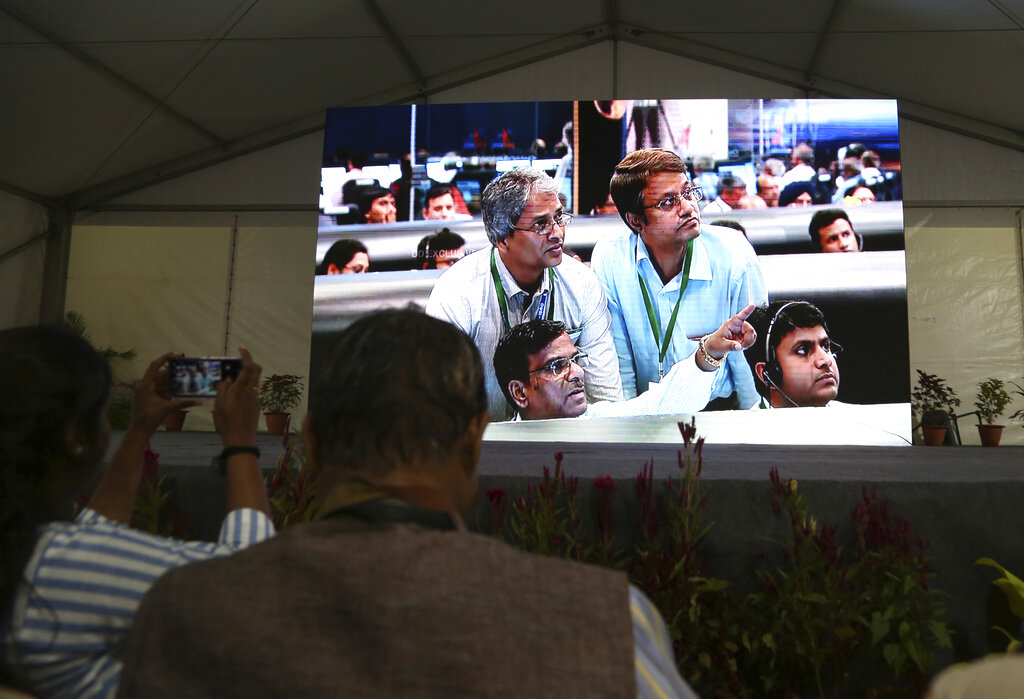Written with PTI and AP reports
Isro may have lost Chandrayaan 2's Vikram lander and rover Pragyan housed inside it, a senior official of the space agency associated with the unmanned moon mission said on Saturday.
Earlier in the day, contact from the lander to the ground stations was lost during its powered descent to the lunar surface minutes before the planned touchdown.
'Vikram lander descent was as planned and normal performance was observed up to an altitude of 2.1 km. Subsequently, the communications from the lander to ground stations was lost,' Isro chief K. Sivan said. 'The data is being analysed.'
Speaking to PTI, a senior official closely associated with the mission said later: 'There is no communication with the lander. It's as good as lost. There is no hope. Very, very difficult to re-establish contact.'
The 1,471-kg lander of Chandrayaan-2 -- the first Indian mission to explore the lunar terrain with home-grown technology -- is named Vikram after Dr Vikram A. Sarabhai, the father of the Indian space programme.
The lander was designed to execute a soft landing on the lunar surface and to function for one lunar day, which is equivalent to about 14 earth days.
Chandrayaan-2's 27kg rover is a six-wheeled robotic vehicle named Pragyan, which translates to 'wisdom' in Sanskrit.
It's designed to travel up to 500 metres from the landing spot on the Moon and leverage solar energy for its functioning.
The lander carried three scientific payloads to conduct surface and sub-surface science experiments, while the rover carried two payloads to enhance understanding of the lunar surface, according to Isro.
The mission life of the orbiter will be one year.
A successful landing would have made India just the fourth country to land a vessel on the lunar surface, and only the third nation to operate a robotic rover there.
The roughly $140-million mission was intended to study permanently shadowed moon craters that are thought to contain water deposits that were confirmed by the Chandrayaan-1 mission in 2008.
Prime Minister Narendra Modi had travelled to the space centre in Bangalore to witness the planned landing in the early hours of Saturday and congratulate the scientists who were part of the mission.
The space agency's chairman had earlier called Chandrayaan 2 the 'most complex mission ever' undertaken by the space agency.
The mission lifted off on July 22 from the Satish Dhawan Space Centre in Sriharikota.
After its launch on July 22, Chandrayaan 2 spent several weeks making its way to the moon, ultimately entering lunar orbit on August 20.
On September 2, Vikram separated from the mission's orbiter, and the lander began a series of braking maneuvers to lower its orbit and ready itself for landing.
Only three nations — the US, the former Soviet Union and China — have landed spacecraft on the moon.
Last January, China achieved the first landing on the far side of the moon. In April, an Israeli spacecraft attempting to land crashed moments before touchdown.










